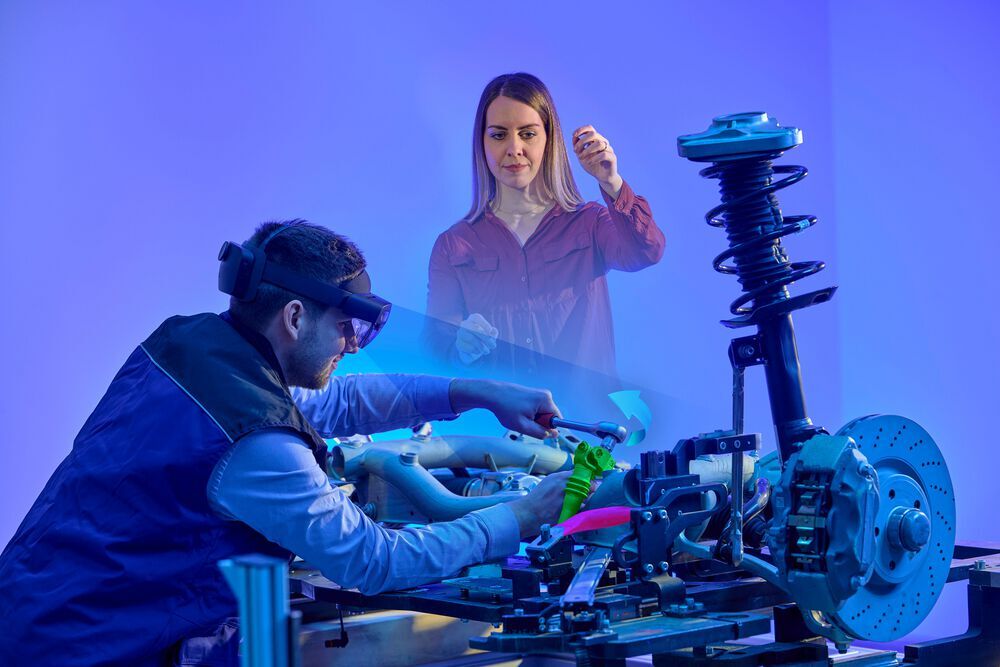Researchers present AI-based assembly and quality control
17.07.2023
Experts at Fraunhofer IGD have developed software that uses artificial intelligence to optimise the assembly of components and also checks the quality. It verges on “sorcery”!
 Ghost Helper! The new AR-supported assembly workstation of Fraunhofer IGD supports production processes virtually and also enables remote experts to be connected as telepresent avatars. Read here what this type of assembly has to offer. (Srouce: Fraunhofer IGD)
Ghost Helper! The new AR-supported assembly workstation of Fraunhofer IGD supports production processes virtually and also enables remote experts to be connected as telepresent avatars. Read here what this type of assembly has to offer. (Srouce: Fraunhofer IGD)
Industrial assembly lines come in many forms. Some are characterised by constantly changing product set-ups, while others are characterised by complex processes and a high need for coordination between workers and other experts. The Fraunhofer Institute for Computer Graphics Research IGD now supports users with a combination of augmented reality (AR) and artificial intelligence (AI) to meet the challenges in production, it says. This option consists of an AR-supported assembly workstation that guides the assembly worker through the sequence of assembly and simultaneously offers quality control of the components as well as remote support, as the experts explain. Companies can thereby reduce the error rate and avoid expensive downtimes. The researchers will present the new AI software at the Control trade fair and the Hannover Messe.
Immediate feedback avoids assembly errors
With augmented reality glasses on their head, the assembly worker can see the sequence and orientation of the individual components directly in front of their eyes. This is not a vision of the future, the IGD researchers make clear, but already simplifies production processes today. Last but not least, the AR-supported assembly workstation makes paper instructions superfluous. Instead, four cameras record the work area and guide the personnel through the individual assembly steps via a mobile AR output unit - for example, via tablet or AR glasses.
What happens if the person reaches for the wrong component? A visual error message including the insertion of the correct element appears immediately in the field of vision of the potential culprit.
Perhaps the component is correct, but is positioned incorrectly? In this case, feedback is also given, which also happens if the component has a defect, such as a missing drill hole. This saves expensive consequences, the researchers emphasise.
External helper joins in virtually
This support is in demand in the automotive sector, for example, but also in plant and tool construction as well as in quality assurance. The manufacturing process of batteries and individually constructed switch cabinets are also possible fields of application, according to the experts. The software offers another advantage, especially for complex product assemblies. If questions or problems arise, for example, an expert can be called in from outside without delay to support the person on the assembly line. The expert explains the process via direct virtual presence and superimposes annotations in the field of vision. By using immersive AR technologies, the assistant appears directly in the environment, virtually in the user's experiential space, which creates a kind of natural communication and interaction - as if both participants in the conversation were physically present. This form of telepresence is a core application of the “Industrial Metaverse”.
Source: www.etmm-online.com
For more information, please visit: www.igd.fraunhofer.de













































